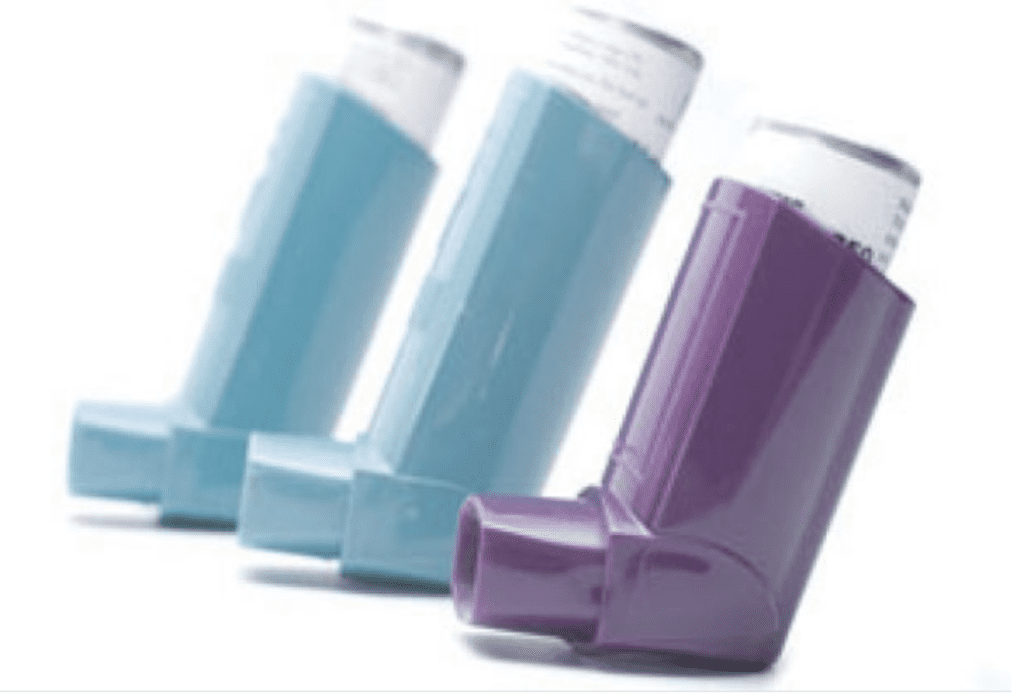
Less propellant and plastic use per dose for treating asthma and COPD

Mr Wilkinson says doctors should prescribe more environmentally friendly propellants, like the new-to-Pharma 152a (no drug product yet registered) and the older 134a. HFC 227 has a higher global warming potential (GWP) than the other two gases; the GWP is multiplied by the actual gas emitted to give the environmental impact usually quoted in tonnes ‘CO2 equivalent’ or CO2e.
Propellant type | GWP* | % of 227 | Tonnes CO2e per 12 devices of 12gm of HFC |
HFC – 227 | 3220 | 100% | 0.46 |
HFC – 134a | 1430 | 44% | 0.21 |
HFC – 152a | 124 | 4% | 0.02 |
*source IPCC 4th Assessment report – these numbers are higher than other sources. The average UK carbon footprint is ~8 tonnes per person per year, the US and Australia circa double that per citizen.
In 2018 inhaler HFA emissions accounted for 5% of UK HFA emissions, but only 0.2% of total UK CO2e emissions.
UPC point out that pharmaceutical companies are perhaps able to control/reduce planned overage in the pMDI cans. It this way it might be possible to save ~20% of the HFC annual respiratory CO2e emissions in this way.
Mr Wilkinson’s RDD slide showed that moving from a 227 pMDI to a DPI for a year was CO2e equivalent to one short- haul flight. UPC calculations at 202 gm CO2e per passenger km, show equivalence to 3 hours total flying time. Say London to Brussels and return. This analysis ignores the processing and production energy of a heavier plastic MDPI that also equates to CO2e in the atmosphere, so perhaps favours the DPI a little.
UPC’s request to medical device developers is to thin down your single-use wall sections and reduce the plastic we engineer into products. 1.5 mm wall has been fairly typical for decades, now is the time to design with 1.2 mm wall or less. This achievement would be a 20% reduction in plastic consumption for the same number of patients treated.
On an artistic note , waste but cleaned plastic inhalers could be repurposed in a competition by young artists to make encased mosaic floors in grand public buildings such as a hospital, or be used in a large colourful mural. This competition might help to promote inhaler recycling by demonstrating scale.
GSK have the only UK inhaler recycling scheme, but sadly only 1% of devices prescribed reach it we were told at RDD. This scheme needs more promotion and much wider adoption by pharmacies and patients to be effective in recycling the high GWP overage of HFC in a finished canister. Perhaps counter intuitively the plastic inhaler actuator is made from polypropylene, which is not often re-cycled.
UPC says it is time to take more action to improve the sustainability of inhalers.
- How about the industry lobbying the FDA et al to be able to use recycled / regrind plastic in non-critical, non-skin contact device components?
- How about moving away from polypropylene which is hardly recycled (<1% in the US), and using PET instead that is recycled extensively?
- How about using PMMA a bit more which can be reused – transparent inhalers melted down to make windows for homes? (PMMA is Perspex, Lucite or Plexiglas)
Please join in the debate and share your ideas for more sustainable respiratory drug delivery. Together we might achieve something really useful!
More sustainability in treating patients and controlling their asthma – less plastic and CO2e per dose please.
What do you think? Email us: technology@upccambridge.co.uk

